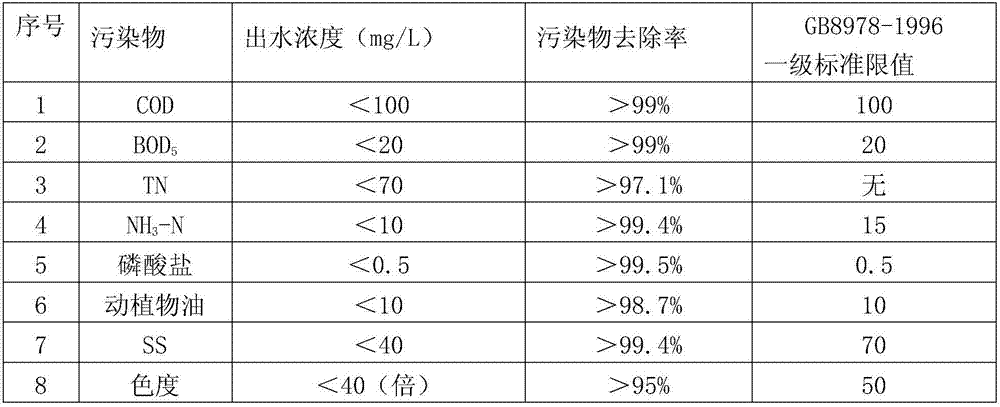Kitchen waste anaerobic digestion wastewater treating method
A technology for anaerobic digestion and kitchen waste, which is applied in the field of kitchen waste wastewater treatment and waste water produced in other processes of kitchen waste treatment, and can solve unfavorable waste water biological denitrification, secondary pollution, and anaerobic treatment unit operation Management requires advanced issues
- Summary
- Abstract
- Description
- Claims
- Application Information
AI Technical Summary
Problems solved by technology
Method used
Image
Examples
specific Embodiment approach
[0029] See the attached picture for a treatment scale of 100m 3 / d of kitchen waste wastewater as an example, the specific implementation is as follows:
[0030] Wastewater after anaerobic digestion and dehydration of food waste slurry and waste water produced in other processes of food waste treatment Water quality: COD: 12000-15000mg / L, BOD 5 : 4500~5000mg / L, TN: 2100~2400mg / L, NH 3 -N: 1800~2000mg / L, TP: 110~130mg / L, SS: 7000~10000mg / L, animal and vegetable oil: 800~1000mg / L, pH: 7.5~8, chromaticity: 800~1000 times.
[0031] a. The waste water after anaerobic digestion and dehydration of the kitchen waste slurry and the waste water produced in other processes of the kitchen waste treatment, first enters the oil separation primary sedimentation tank for the oil separation primary sedimentation treatment, and the slick oil in the waste water is separated, and the waste water in the waste water Large particles of impurities and large particles of suspended matter are separat...
PUM
 Login to View More
Login to View More Abstract
Description
Claims
Application Information
 Login to View More
Login to View More - R&D
- Intellectual Property
- Life Sciences
- Materials
- Tech Scout
- Unparalleled Data Quality
- Higher Quality Content
- 60% Fewer Hallucinations
Browse by: Latest US Patents, China's latest patents, Technical Efficacy Thesaurus, Application Domain, Technology Topic, Popular Technical Reports.
© 2025 PatSnap. All rights reserved.Legal|Privacy policy|Modern Slavery Act Transparency Statement|Sitemap|About US| Contact US: help@patsnap.com


